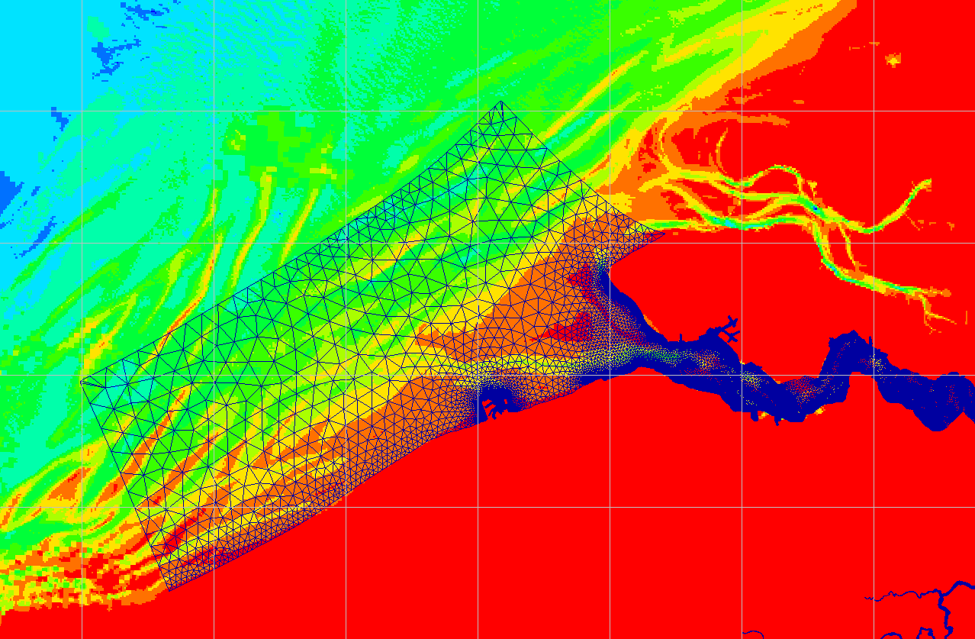General idea
For the quantification of the plastic flux, the spatial and temporal variation of the plastic concentrations as quantified based on the field campaigns will be used in two ways in the modelling process. The first way is by defining the initial state of the amount of plastic in each grid cell of the study area. This is achieved by the field data collected at the sampling locations, and for those grid cells not covered in the field campaigns, an interpolation method is applied. The second way relates to the definition of boundary conditions for the model. These boundary conditions are time series data spanning the model simulation period. An independent set of data will be used for model calibration and validation.

Modelling approach
The majority of modelling approaches for marine litter are based on the principle of so-called Lagrangean particle tracking. This method simply assumes that a particle follows the direction of the mean velocity in each point and its distance is then simply computed as the product of this velocity with a chosen time step. This methodology is suitable as a first approximation to determine the major pathways of floating particles, but it cannot account for multiple other processes that can drift the particle away from this streamline path. It evidently finds back the big gyres (i.e., large vortex flows) in the oceans as potential accumulation points (i.e., the famous garbage patches), but cannot determine the much more visible and abundant beaching of plastics in the surroundings of river mouths, neither can it determine the plastic accumulation on the bottom. Therefore, this popular method cannot predict the relative distribution of beached, deposited, suspended and floating plastics.
As a Lagrangean particle tracking method is not suitable for the aim of the present study, we will adopt the Eulerian modelling strategy that is commonly used for sediment particles. Such sediment particles in the aquatic environment are much more abundant than plastics. In an Eulerian model a mass balance equation is solved by computing all mass fluxes of all particles passing through (i.e. entering and leaving) the surfaces of a given volume (determined by the mesh cells of the computational grid). The net flux is then outbalanced by the change in mass concentration within.
The plastic dispersion model used to quantify the plastic flux towards the North Seal is built on the foundation of an Eulerian hydrodynamics-wave-sediment model. In this model, it is essential to incorporate all the physical processes that affect the fate of plastic in aquatic environments as described in the previous section. With existing knowledge of the sediment dynamics and incorporation of physical processes relevant to the plastic debris, a novel plastic dispersion model will be developed. The open-source TELEMAC-MASCARET modelling environment (www.openTELEMAC.org) will be used for building the plastic dispersion model that will be used to quantify the plastic flux towards the North Sea. Three modules will be combined and are coupled: 1) a hydrodynamic model on currents (including a salinity correction); 2) a hydrodynamic model on waves; and 3) a sediment transport module, where plastics can be defined as a second particle fraction. More technical details about these three modules can obtained through contacting the KU Leuven partner of PLUXIN.